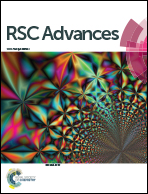Factors governing the competition between group IA and IB cations for monensin A: a DFT/PCM study
Abstract
The affinity of monensin A to bind monovalent metal cations was evaluated by means of density functional theory (DFT) combined with polarizable continuum model (PCM) computations. The effect of various factors on complex formation between the monensinate A anion and group IA and IB metal ions was assessed. Competition between Na+ taken as a reference and monovalent metal cations was estimated using the Gibbs free energy for substituting the ligand-bound Na+ with its rival ions in the process [M+-solution] + [Mon−Na+] → [Mon−M+] + [Na+-solution] (M+ = Li+, K+, Rb+, Cs+, Cu+, Ag+ and Au+). The calculations revealed that the decrease in size of the cations accompanied by an increase of their accepting ability enhances the metal selectivity towards ligand donor atoms. In the gas-phase the affinity of monensinate A decreases in the order Cu+ > Li+ > Na+ > Au+ > Ag+ > K+ > Rb+ > Cs+. The complex formation can be manipulated by changing the solvent used. The polyether ionophore selectively binds Na+ ions in polar solvents but could become Li+ or Cu+-selective in low-polarity solvents.



 Please wait while we load your content...
Please wait while we load your content...